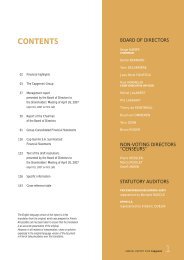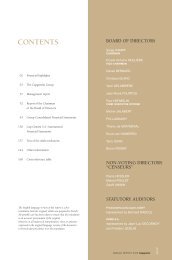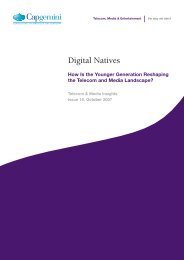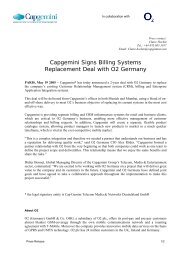Transportation Management Report 2011 - Capgemini
Transportation Management Report 2011 - Capgemini
Transportation Management Report 2011 - Capgemini
You also want an ePaper? Increase the reach of your titles
YUMPU automatically turns print PDFs into web optimized ePapers that Google loves.
Figure 2: Distribution Network Optimization considerations<br />
• Evaluate scenario results: Each<br />
scenario needs to be judged by its<br />
relationship to total operational<br />
costs and the savings generated<br />
compared to the current situation.<br />
What is important for your<br />
managers in this phase is to analyse<br />
the impact of those scenarios on<br />
other aspects of the organization,<br />
such as human resources, legal<br />
(regulations, taxes), contracts with<br />
3PLs and other logistics providers,<br />
transportation availability, total<br />
investment required, and potential<br />
risks. Considering all these issues<br />
will allow you to select the scenario<br />
that best suits the objectives for<br />
cost and carbon footprint and,<br />
ultimately, satisfies all stakeholders’<br />
needs.<br />
11<br />
5<br />
Participate<br />
in<br />
calibration<br />
4<br />
6<br />
Evaluate<br />
Scenario results<br />
Provide<br />
accurate<br />
information<br />
3<br />
1<br />
Identify<br />
potential<br />
scenarios<br />
Define clear<br />
objectives<br />
2<br />
Define<br />
volume plans<br />
The best results for the project will<br />
be obtained if managers know exactly<br />
what to ask, what information to<br />
consider, and the impact of changes<br />
on the organization as a whole.<br />
In a demand-driven supply<br />
chain, distribution networks<br />
are usually designed to satisfy<br />
commercial conditions such as<br />
client agreements, service levels,<br />
delivery frequency, direct shipments,<br />
and lead times. These conditions<br />
become design parameters. We<br />
recommend organizations also<br />
consider what impact changing<br />
these variables will have on cost<br />
savings. In addition to having general<br />
management sponsorship, we<br />
strongly recommend, involving other<br />
functional areas, such as marketing<br />
and sales in the scenario definition<br />
and evaluation process.<br />
Besides obtaining the most costefficient<br />
network configuration, we<br />
have found that analyzing network<br />
costs can lead to the identification of<br />
specific needs for implementing TMS<br />
software, such as load design, route<br />
planning, or carrier selection. And<br />
it can also identify potential areas<br />
where cost reductions and savings<br />
might be available in the short term,<br />
for instance:<br />
• Optimization of inventory<br />
management<br />
• Lower transportation costs by<br />
consolidation of LTL shipments<br />
• Reduction of lead times<br />
• Lower transportation costs by<br />
changes in rates, frequency, and<br />
elimination of errors and non<br />
value-added services<br />
In summary, there are both internal<br />
and external variables (such as<br />
economic context and market<br />
changes) that could make your<br />
distribution network inflexible<br />
and expensive. A distribution<br />
network optimization project, using<br />
advanced simulation software, can<br />
lead to important cost reductions<br />
for a company and allow them to<br />
incorporate green planning into their<br />
network design. When a company<br />
wants to undertake such a project,<br />
both general and supply chain<br />
management should be clear on the<br />
objectives pursued, the premises and<br />
possible scenarios to be evaluated,<br />
and should participate in the<br />
evaluation of solutions presented by<br />
the software, in order to select the<br />
best network configuration.















